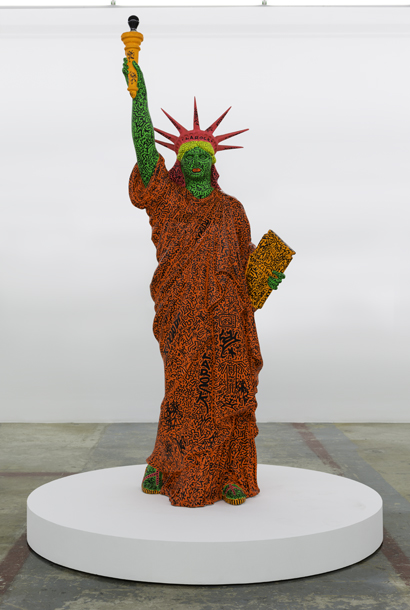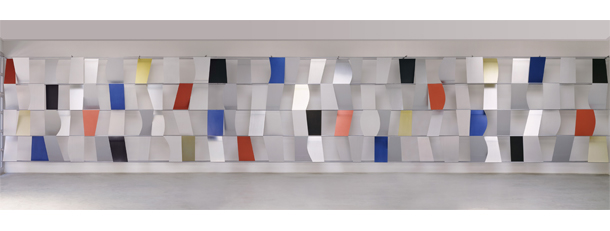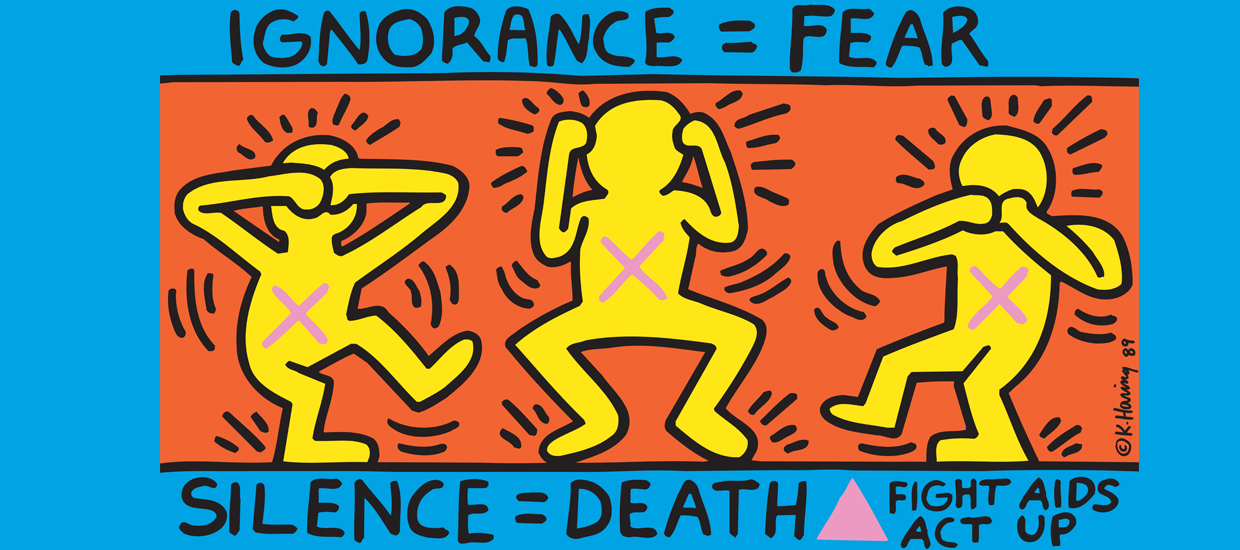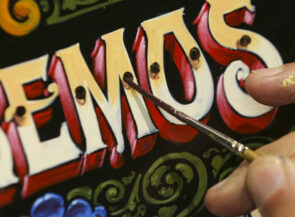When Keith Haring was at his peak, in the 1980s, it seemed you could barely turn your head without seeing one of his creations. While he’s best known for his New York City murals, Haring was not picky about the surfaces he adorned: nightclubs, hospitals, T-shirts, watches, body parts, the Berlin Wall. This prolificness might seem to smack of self-promotion, but in truth it grew out of his desire to bring art to the masses—a goal that provides the theme of a major new Haring exhibition.

Acrylic and enamel on fiberglass with black light / Photo: Courtesy of Rubell Museum, Miami and Washington, D.C.
© Keith Haring Foundation
Keith Haring: Art Is for Everybody, a retrospective at The Broad Museum in Los Angeles, spans from the late 1970s, when Haring, then a college student, began drawing on blank advertising boards in New York subway stations, to 1988, two years before he died of an AIDS-related illness at just 31 years old. According to Sarah Loyer, curator and exhibitions manager at The Broad, those subway drawings—Haring created thousands of them, and he was always happy to talk with passing commuters about what he was doing—came to set the tone for his career.
“Keith believed that art is social,” Loyer explains. “His work was about community and collaboration, being part of a larger creative atmosphere.”

Haring’s work drew a great deal of inspiration from social movements, and in life he was a tireless advocate for gay rights, yet Loyer describes his artistic and personal spirit as being full of “joy and simplicity.” This quality helped elevate him to pop culture stardom—he counted Madonna and Andy Warhol among his friends—yet he simultaneously stayed accessible to the masses, with ventures such as the Pop Shop, a retail store he opened in Soho in 1986 (with a second location in Tokyo following in 1987).
“He was interested in working outside the establishment,” Loyer says. “In the streets, in the subways, in music venues—all these alternative spaces outside of museums and galleries.”




